Executive summary (the 10 biggest shifts)
- Top-10 reshuffle. 2025 keeps Switzerland–Sweden–U.S. at the top, but Korea jumps to #4, Singapore to #5, UK slips to #6, Denmark rises to #9, and China enters the Top-10 for the first time; Germany falls to #11. In 2024, the Top-10 ended with Germany (#9) and Denmark (#10).
-
Coverage expands. The index grows from 133 economies (2024) to 139 (2025) as Congo, Guinea, Lesotho, Malawi, Seychelles, and Venezuela are added under JRC-audited inclusion rules.
-
Cluster methodology upgrade. The 2025 cluster ranking adds venture capital deal locations to patents and scientific authors, rebalancing which hubs rise (e.g., NYC, London, LA enter the Top-10 clusters) and which slide.
-
Funding climate weakens. R&D growth slowed to 2.9% in 2024 (lowest since 2010) and is projected at 2.3% in 2025; VC deal values rebounded on Gen-AI megadeals, but deal counts fell for a third straight year.
-
Middle-income momentum intensifies. A cohort led by China, India (38), Türkiye (43), Viet Nam (44), the Philippines (50), Indonesia (55), Morocco (57) keeps climbing; Saudi Arabia (46), Qatar (48), Brazil (52) are among the fastest improvers since 2020.
-
Overperformers broaden. Seventeen low- and middle-income economies outperform their development level in 2025; India and Viet Nam remain the longest-running overperformers, with SSA hosting the most.
-
Theme pivots. 2024 focused on “Unlocking the Promise of Social Entrepreneurship”; 2025 is “Innovation at a Crossroads”, emphasizing stalled investment growth vs. persistent tech progress.
-
China’s structural rise. Beyond reaching #10 overall, China overtakes Switzerland in Knowledge & Technology Outputs, stays #2 in R&D expenditure, and leads in patent filings.
-
Cluster geography shifts. New top-100 cluster entrants include Miami, Phoenix, Salt Lake City (US); Ningbo, Ningde (CN); Dublin (IE); Oslo (NO); Hamburg (DE); Manchester (UK); Mexico City (MX), with India’s Bengaluru (21), Delhi (26), Mumbai (46) jumping.
-
2024 vs 2025 “tracker” tone. 2024 already flagged shrinking innovation finance and sluggish productivity; 2025 doubles-down with hard numbers on slower R&D and concentrated VC.
The rankings: who moved, who didn’t
Top-10 snapshot, side-by-side
| Rank | GII 2024 | GII 2025 |
|---|---|---|
| 1 | Switzerland | Switzerland |
| 2 | Sweden | Sweden |
| 3 | United States | United States |
| 4 | Singapore | Republic of Korea |
| 5 | United Kingdom | Singapore |
| 6 | Republic of Korea | United Kingdom |
| 7 | Finland | Finland |
| 8 | Netherlands | Netherlands |
| 9 | Germany | Denmark |
| 10 | Denmark | China |
Sources: 2024 and 2025 WIPO ranking pages/press release. (WIPO)
What changed most:
-
- China crosses the psychological threshold into the Top-10 (from #11 in 2024). (WIPO)
-
- Germany exits the Top-10 (from #9 → #11). Korea logs a new high at #4. UK edges down #5 → #6; Denmark improves #10 → #9. (WIPO)
Middle-income climbers (signal list): India (#38), Türkiye (#43), Viet Nam (#44), Philippines (#50), Indonesia (#55), Morocco (#57), all highlighted by WIPO for durable upward trajectories. (WIPO)
Methodological and coverage changes that matter
- Economy coverage
2025 adds six economies (Congo, Guinea, Lesotho, Malawi, Seychelles, Venezuela), expanding the sample from 133 → 139. This is not cosmetic: adding lower-data markets makes regional comparisons more complete and changes peer groups for benchmarking. -
Innovation cluster ranking, new VC metric
WIPO now blends (i) inventors on PCT patents, (ii) scientific authors, and (iii) VC deal locations. This captures entrepreneurial intensity, pulls NYC, London, LA into the Top-10 clusters, and narrows the US–China cluster gap. European clusters, with thinner VC markets, generally lose rank relative to 2024’s patent/publication-only view.
The funding climate: the inflection in the data
-
R&D growth slowed to 2.9% in 2024 (lowest since 2010), with a further slowdown projected to 2.3% in 2025, pressure from higher rates and softer manufacturing profits.
-
VC values rose 7.7% in 2024, but concentrated in US Gen-AI megadeals; global deal counts fell 4.4%, the third straight annual decline. Translation: liquidity exists, but it’s narrow.
-
2024 already warned of “shrinking innovation finance” and sluggish productivity; 2025 confirms the cooling with harder numbers.
So what? Expect polarization: ecosystems with deep talent/industry links and robust VC pipelines will keep pulling away during tight cycles.
Regional and structural storylines to watch
-
Korea’s surge to #4 reflects sustained business-performed R&D and researcher density; Singapore stays elite on unicorn value, advanced manufacturing, and software intensity.
-
China not only enters the Top-10 but leads Knowledge & Technology Outputs and is #2 in R&D, a structural tilt toward output intensity.
-
Sub-Saharan Africa gains five new entrants (incl. Seychelles, Malawi, Lesotho, Guinea, Congo) and boasts the largest number of overperformers (e.g., South Africa, Senegal, Rwanda).
-
MENA momentum: UAE (30), Saudi (46), Qatar (48) keep advancing on inputs (business environment, ICT use, university-industry collaboration), signaling policy-driven playbooks.
Cluster geography: where the gravity points now
Top 10 clusters (2025), now VC-aware: Shenzhen–HK–Guangzhou; Tokyo–Yokohama; San Jose–San Francisco; Beijing; Seoul; Shanghai–Suzhou; New York; London; Boston–Cambridge; Los Angeles. The Top-100 account for ~70% of global PCT filings and VC activity; the Top-10 alone: ~40% of PCT and 35% of VC. (WIPO)
New Top-100 entrants underline the VC effect: Miami, Phoenix, Salt Lake City, Ningbo, Ningde, Dublin, Oslo, Hamburg, Manchester, Mexico City. Bengaluru (21), Delhi (26), Mumbai (46) jump strongly. (WIPO)
The narrative shift: from “social entrepreneurship” to “a crossroads”
-
GII 2024 put a thematic spotlight on social entrepreneurship, how to harness innovation for broad societal benefit. WIPO
-
GII 2025 frames a macro inflection: investment growth cooling even as tech breakthroughs (AI, green compute, robotics) accelerate, “Innovation at a Crossroads.”
Innovative EcoSystems POV (what this means for strategy)
- Play the cycle, not the headline. Slower R&D and selective VC mean quality pipelines (TRL progression, industry co-development, and commercialization pathways) beat splashy announcements. Anchor in university–industry deals and procurement-driven pilots where capital is scarce.
-
Bet on overperformers. We see India, Türkiye, Viet Nam, Indonesia, Morocco and fast climbers in GCC as prime markets for FDI partnerships, cross-border accelerators, and startup sourcing.
-
Build VC substitutes. Where VC is thin (many EU and emerging clusters), corporate venturing and mission-tied public instruments (outcome-based grants, scale-up vouchers) can replicate risk capital’s catalytic role.
-
Compete on outputs. The 2025 weight of evidence favors knowledge & tech outputs (IP, exports, unicorn value). Prioritize IP creation, standards participation, and export-ready scale-ups.
Actionable next steps (by stakeholder)
-
Governments & EDOs:
-
Stand up cross-ministerial “Innovation PMOs” to target specific GII pillars (human capital, market sophistication, business sophistication). Use WIPO’s two-step optimization model (assessment → policy design).
-
Launch VC-complementary instruments (convertible grants, co-invest with corporates, public procurement for innovation) to counter cyclical VC dips.
-
-
Corporates:
-
Create outsourced R&D stacks with incubators/universities in rising markets (India, Türkiye, Viet Nam) to arbitrage talent density and time-to-prototype.
-
Where clusters gained on VC, scout deal-flow (NYC, London, LA, Bengaluru, Delhi, Mumbai) mapped to your tech roadmaps. WIPO
-
-
Investors:
-
Lean into policy-enabled ecosystems (UAE, Saudi, Qatar) and overperformers (India, Viet Nam, Senegal, Tunisia, Uzbekistan, Rwanda) where public co-financing and market reform reduce risk.
-
-
Universities/Incubators:
-
Double down on university–industry co-publications and late-stage VC links to convert research into output metrics that move GII needles.
-
Bottom line
2024 showed stability with early warning signs on finance; 2025 marks a rebalancing: more economies in scope, VC-aware cluster rankings, and cooler investment data, yet innovation outputs keep compounding. For places and firms that align policy, talent, capital, and commercialization, the crossroads is an opportunity, not a stall.
Key sources (WIPO official pages & materials):
Top-10 and 2025 findings; R&D/VC trends; middle-income climbers; overperformers. (WIPO)
2024 Top-10 and 2024 “at a glance.” (WIPO)
2024 thematic focus and finance tone. (WIPO)
2025 cluster methodology and results; concentration metrics; new entrants. (WIPO)
Coverage expansion (133→139) and added economies (JRC audit). (WIPO)



